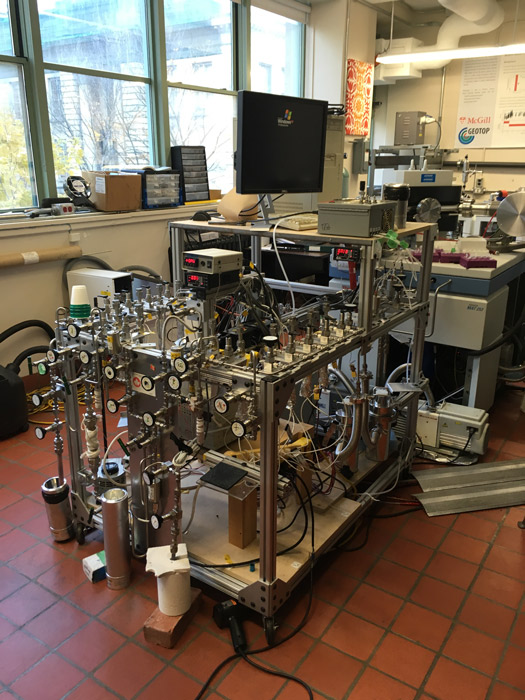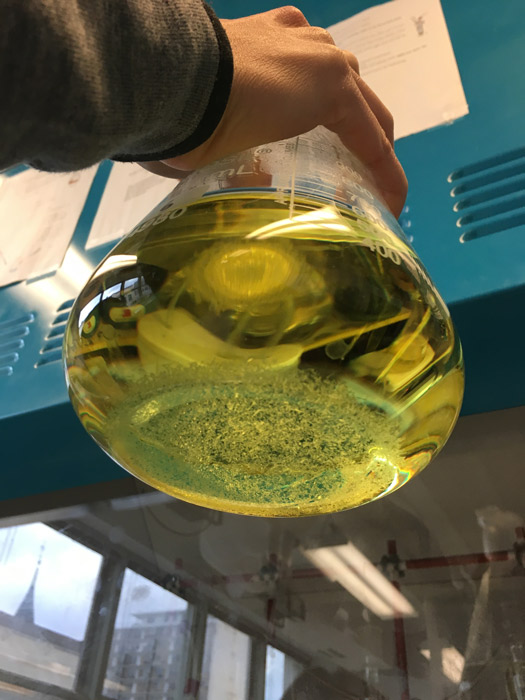Thanks to a study published in the October issue of Nature Communications, ecosystems are now known to be capable of surviving in the ancient rocks of the Earth’s crust.
Two members of McGill’s Department of Earth and Planetary Sciences—Boswell Wing and Thi Hao Bui—assisted colleagues from the University of Alberta and the University of Toronto to publish this groundbreaking discovery.
The researchers extracted water from a non-active portion of a mine outside of Timmins, Ontario. The high concentration of sulphur and the variety of sulphate isotopes within the extracted water were deemed worthy of investigation. Isotopes are versions of the same element, but with a different number of neutrons within their nuclei and different radioactive charges.
Measuring the sulphate isotopes proved a tricky and involved process. Bui, a postdoctoral research graduate in the Department of Earth and Planetary Sciences at McGill, outlined the process.
“For every litre of water extracted from the mine, about one milligram of isotope exists,” Bui said. “In the wet lab, research assistants work to locate this one milligram of isotope within the litre of water, which takes a lot of time and energy.”
A machine built by members of McGill’s research staff detects differences between these isotopes because the variation in the number of nuclei affects their weight.

These measurements led the team to its unexpected conclusion: Microbial organisms must be acquiring their energy from the repeated recycling of ancient sulphur.
“We didn’t actually identify any microorganisms in those subsurface waters,” Wing, former Associate Professor of the Department of Earth and Planetary Sciences at McGill, explained. “But what we identified was evidence of their activity.”
By measuring sulphate isotopes dissolved in water, scientists concluded that microbial organisms could thrive in fracture waters found between the cracks of ancient rocks. Microorganisms can take in organic carbon—like sugars—from their atmosphere and can then use sulphate to oxidize it. The combination of suphate and organic carbons allows microorganisms to maintain metabolic activity over two kilometres below the surface of the Earth.
“When [the organisms] do that, they have a very slight preference for the sulphate that contains sulphur 32, relative to the heavier isotopes of sulphur, like sulphur 33 and sulphur 34,” Wing said.

Lead author Long Li, assistant professor at the University of Alberta’s Department of Earth and Atmospheric Sciences, explained that these isotopes provide a renewable energy source for the microorganisms.
“Sulphate […] is actually produced in place by reaction between the water and rock,” Li explained to the McGill Newsroom. “What this means is that the reaction will occur naturally and can persist for as long as the water and rock are in contact, potentially billions of years.”
Not only do the sulphate isotopes highlight how diverse the habitable portions of Earth are, but also that there is a possibility that similar life forms exist on Mars.
While this prediction may also be true for other planets, similarities between early Earth and early Mars make our neighbouring planet a particularly convincing candidate for once having sustained life. Evidence of historical shorelines and indicative chemicals affirms that there were once large bodies of water on Mars. Furthermore, Mars is largely made of the same type of rocks as Earth.
Wing explains that the surface of Mars is dry, cold, and has little protection from UV radiation. However, living deep in the crust of Mars, off only hydrogen and sulphate in a fluid-filled pocket, could allow for growth and a habitable environment.
The novel discovery could help guide further Martian explorations. To look for life on Mars, look within its crust.








